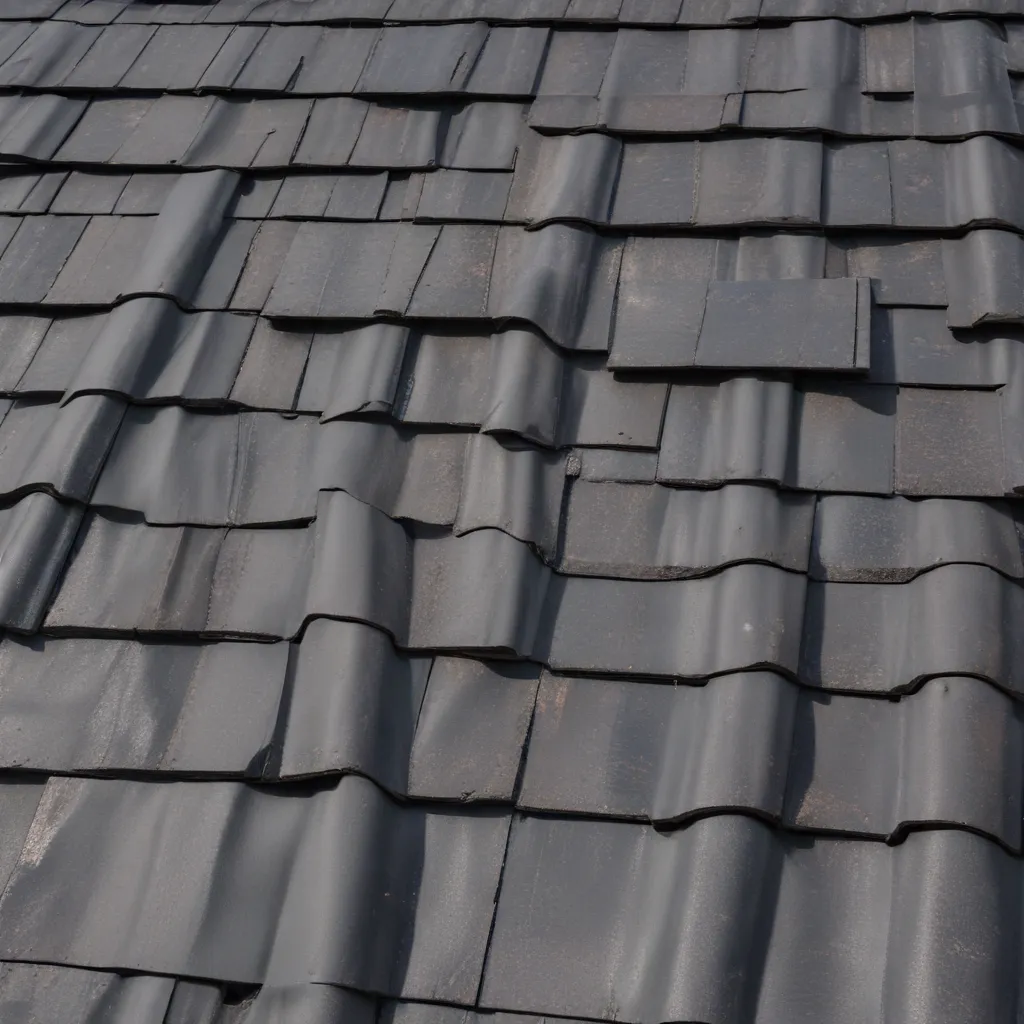
As an experienced roofing specialist writing for Genuine Roof Systems, I’m excited to explore the world of composite roofing – a growing trend that offers homeowners a compelling blend of durability, energy efficiency, and environmental responsibility.
Composite roofing has emerged as a versatile and innovative option, challenging the traditional dominance of asphalt shingles and natural materials like slate or cedar shake. These composite systems, made from a mixture of fiberglass, recycled plastics, and other synthetic components, provide a unique combination of benefits that address the evolving needs and preferences of modern homeowners.
Types of Composite Roofing
The composite roofing category encompasses several distinct material compositions, each with its own set of characteristics and applications.
Asphalt Composite Shingles: These shingles, often referred to as “architectural” or “dimensional” shingles, are a step up from the standard 3-tab asphalt variety. Composed of a fiberglass mat coated with asphalt and mineral granules, they offer enhanced durability, improved wind resistance, and a more visually appealing, multi-dimensional appearance.
Polymer-based Composite Shingles: Crafted from a blend of recycled plastics and other synthetic materials, these shingles mimic the look of natural slate or cedar shake while providing superior impact resistance, weather durability, and low maintenance requirements. Brands like DaVinci Roofscapes and Brava Roof Tiles are leading the charge in this segment.
Fiber-cement Composite Tiles: A unique take on the traditional tile roofing system, fiber-cement composite tiles combine the classic aesthetics of clay or concrete tiles with the strength and resilience of engineered materials. These tiles are highly resistant to fire, impact, and rot, making them a popular choice in regions prone to severe weather conditions.
Environmental Benefits of Composite Roofing
As sustainability becomes an increasingly important consideration for homeowners, the environmental benefits of composite roofing materials cannot be overstated.
Energy Efficiency
Thermal Performance: Many composite roofing systems are designed with excellent thermal insulation properties, helping to regulate the temperature inside the home and reducing the workload on heating and cooling systems. This can translate to significant energy savings and a smaller carbon footprint over the roof’s lifespan.
Solar Reflectivity: Composite roofing materials, especially those with lighter color options, often feature a high Solar Reflective Index (SRI). This means they are able to reflect a greater percentage of the sun’s rays, minimizing the amount of heat absorbed by the roof and further contributing to energy efficiency.
Sustainability
Recyclability: Composite roofing products are often crafted from recycled materials, such as plastic waste and fiberglass, reducing the consumption of finite resources and diverting these materials from landfills. At the end of their useful life, many composite roofs can also be recycled, further enhancing their environmental credentials.
Durability: One of the key advantages of composite roofing is its exceptional durability. These materials are designed to withstand the elements, from severe storms to intense UV exposure, with minimal degradation. This extended lifespan translates to fewer roof replacements over time, ultimately reducing waste and resource consumption.
Aesthetic Considerations
Homeowners seeking to enhance the curb appeal of their homes while embracing sustainable solutions often find composite roofing to be a compelling choice.
Design Versatility
Color Options: Composite roofing manufacturers offer a wide range of color choices, from traditional earth tones to more contemporary hues, allowing homeowners to personalize the look of their homes and seamlessly integrate the roof with the overall architectural style.
Architectural Styles: The design flexibility of composite roofing extends beyond color, with options that can mimic the appearance of natural slate, hand-split cedar shake, or even clay tiles. This enables homeowners to achieve the desired aesthetic, whether they favor a classic, rustic charm or a more modern, sleek look.
Curb Appeal
Visual Appeal: Composite roofing materials are engineered to provide a visually appealing, uniform appearance, with a level of detail and texture that rivals natural roofing products. This can contribute to a significant boost in the home’s overall curb appeal and aesthetic value.
Complementary Aesthetics: By selecting a composite roofing system that complements the architectural style and design elements of the home, homeowners can achieve a cohesive, harmonious look that enhances the property’s overall aesthetic appeal.
Installation and Maintenance
While the benefits of composite roofing are numerous, it’s crucial to ensure proper installation and ongoing maintenance to maximize the system’s performance and longevity.
Professional Installation
Proper Techniques: Composite roofing systems require specialized installation methods to ensure optimal performance and adherence to building codes. Homeowners are advised to work with experienced roofing contractors who are familiar with the nuances of these materials and can ensure a proper, secure installation.
Building Code Compliance: Composite roofing products must meet a range of safety and performance standards, such as fire resistance, wind uplift, and impact resistance. Proper installation by qualified professionals helps to guarantee that the roof system meets or exceeds all relevant building code requirements.
Maintenance Requirements
Cleaning and Inspection: While composite roofing materials generally require less maintenance compared to traditional options, it’s still important to periodically inspect the roof and clean off any debris or accumulated dirt. This helps to maintain the roof’s appearance and prevent potential issues.
Repair Procedures: In the event of minor damage, such as cracks or dents, composite roofing systems can often be repaired by experienced contractors, rather than requiring a complete roof replacement. This can help extend the lifespan of the roof and minimize the environmental impact of premature replacements.
By embracing the numerous benefits of composite roofing, homeowners can invest in a roofing solution that not only enhances the aesthetic appeal of their homes but also contributes to a more sustainable future. With their impressive durability, energy efficiency, and design versatility, composite roofing materials from Genuine Roof Systems offer a compelling choice for those seeking a genuine, long-lasting, and environmentally responsible roofing solution.
For more information on Genuine Roof Systems’ comprehensive range of composite roofing products and services, please visit https://www.genuineroofsystems.com.

























